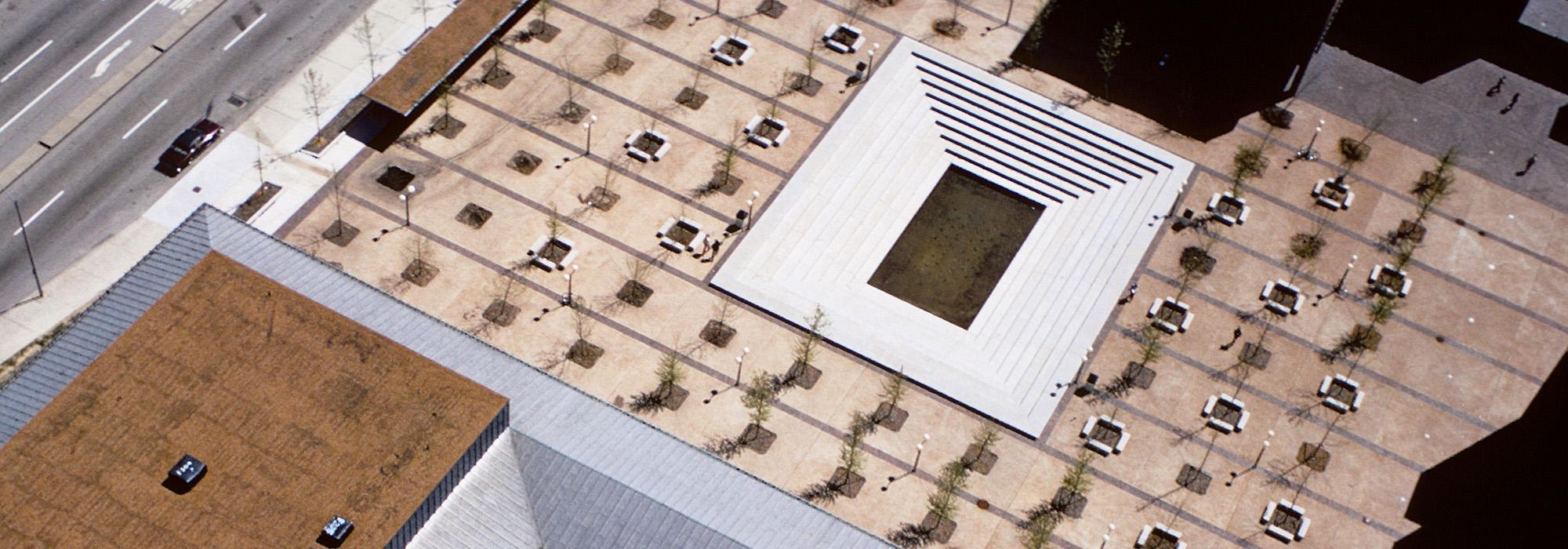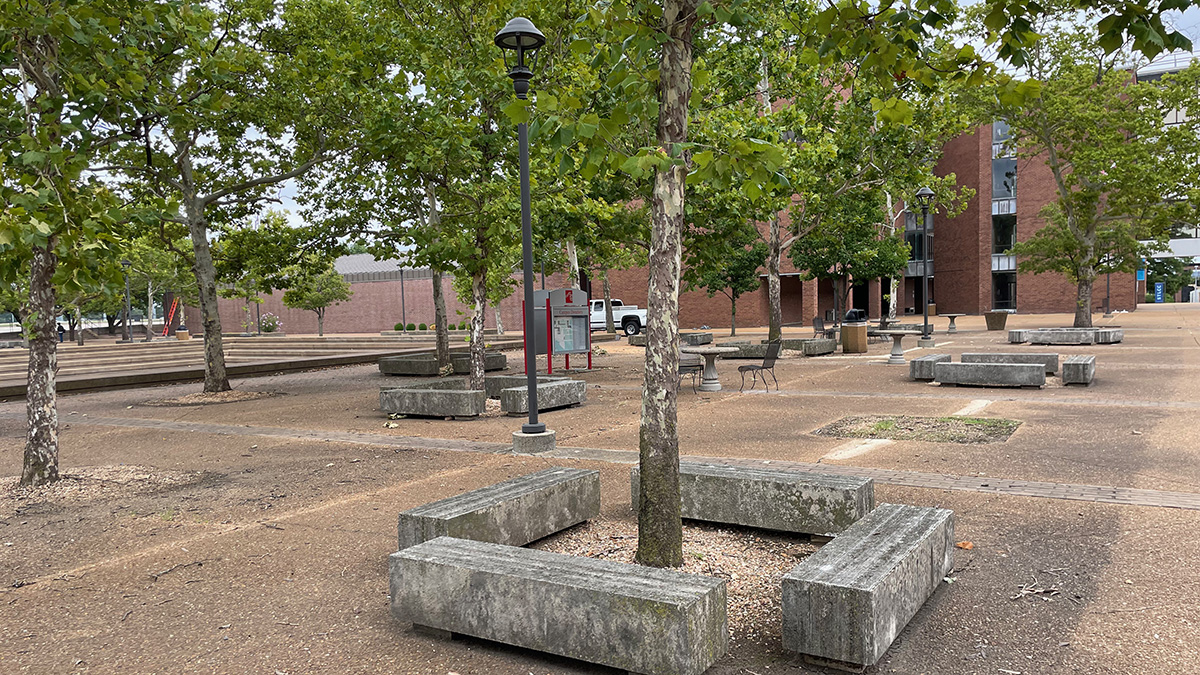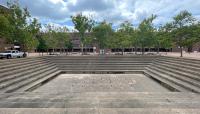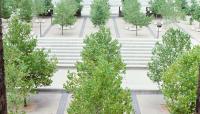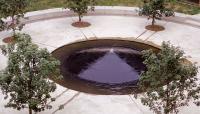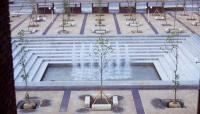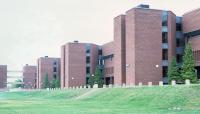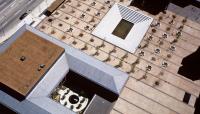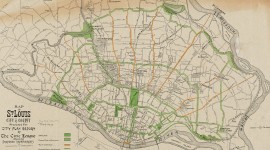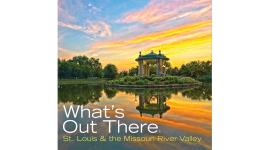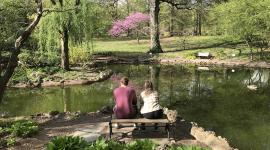Landscape Information
Dan Kiley with Joe Karr designed portions of this campus with local landscape architecture firm Layton Layton & Associates while working on Jefferson National Expansion Memorial (now Gateway Arch National Park). Harry Weese (with site architect Joe Meisel), designed several core campus buildings including two parallel, staggered, Brutalist brick structures. Kiley and Karr complemented Weese’s symmetrical, axial building plan with a network of linear, exterior walkways, connecting academic buildings with a series of shaded courtyards. Their design included a sloped lawn facing Forest Park and a mound, evocative of St. Louis’ indigenous past. The college opened in 1967 and construction, which was managed by Karr, was completed in 1970.
Since the mound, along with the building sited atop of it, was demolished in in 2020 only two significant elements of Kiley and Karr’s design remain: a courtyard and a plaza, both located in the northeastern portion of the campus. The courtyard is enclosed by the Mildred E. Bastian Center for the Performing Arts and features a central, conical fountain, surrounded by a ring of evenly spaced hedge maples. The rectilinear plaza, framed to the east, south, and west by buildings and to the north by Oakland Avenue, is composed of concrete and locally sourced Meramec gravel aggregate divided by evenly spaced brick bands, oriented north-south. The plaza originally featured a gridded bosque of 79 London plane trees that each occupied a square planting bed. With column-like trunks and a roof-like canopy, the trees were collectively meant to extend the boundaries of the surrounding buildings, while providing shelter and shade to visitors. Since completion, ten of the eleven planting beds and trees comprising the easternmost row have been removed. The remaining 88 planting beds remain, but many trees are missing. Individual, cast concrete benches, which surrounded several of the beds remain. The gridded bosque is broken by a sunken amphitheater located in the approximate center of the plaza. Rectangular in plan, the amphitheater consists of concrete tiers, relatively uniform in height and width, that descend to a level basin, where 28 jets propel water directly upward. Kiley and his designers envisioned that on summer days people would gather on the steps of the sunken water feature, seeking respite from the heat.



